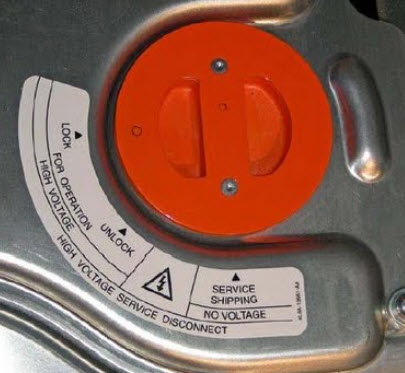Safety & Awareness
Hybrid Electric Vehicles differ from conventional gasoline engine vehicles by including a high voltage electrical power system. The voltage stored and used in some hybrid vehicles presents a new level of risk for service technicians.
The manufacturers have established some training, but it is the responsibility of everyone to be sure the techs are trained and properly equipped, and follow correct procedures while working on these cars.
The threshold voltage at which direct current (DC) becomes dangerous can be as low as 55 to 60 volts, compared to 110 volts for AC.
Service technicians are generally well trained to be cautions around electricity even on gasoline-powered vehicles. The hybrid & EV, however, poses a life-threatening risk.
High Voltage Caution

Every technicians, service man or person involved in Pre-delivery inspection on hybrid & EV needs to be aware of the high voltage danger, no matter how remote the chance of electrocution.
Hybrids have been designed so that the high-voltage system is insulated from the metal vehicle body, and the vehicle metal body ground is not part of the high-voltage circuit. While high-voltage electrical flow from the high-voltage battery pack stops when the vehicle is turned off, the current may not be dissipated from the system for up to 10 minutes. Caution and training are required.
Battery disconnect procedures vary by vehicle and must be part of basic knowledge and training.

